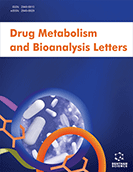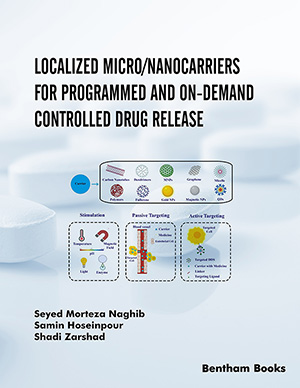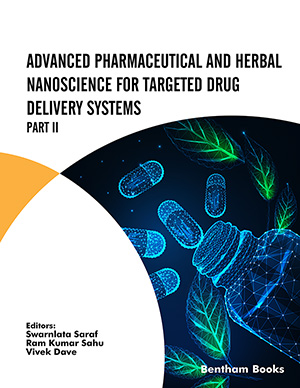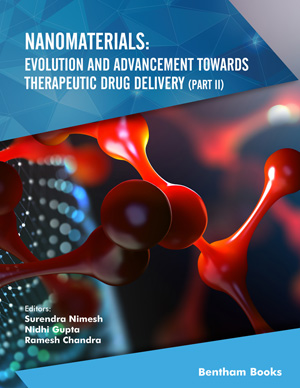Abstract
For the brain to operate normally and to develop with structural integrity in addition to neuronal function, blood-brain barrier present in brain capillaries serves as a vital barrier mechanism. In addition to the transport barrier created by membranes, transporters, and vesicular processes, the structure and function of the BBB are summarised. The physical barrier is created by endothelial tight junctions. The permeability and transport of molecules between extracellular fluid and plasma are constrained by the presence of tight junctions between neighbouring endothelial cells. Each solute must pass through both membranes in the luminal and abluminal divisions. The functions of the neurovascular unit are described, with special emphasis on the pericytes, microglia, and astrocyte endfeet. The luminal membrane contains five separate facilitative transport mechanisms, each of which is exclusive to a few substrates. Nevertheless, the import of big-branched and aromatic neutral amino acids is facilitated by two key carriers (System L and y+) in the plasma membrane. It is asymmetrically present in both membranes. The sodium pump Na+/K+-ATPase is highly expressed in the abluminal membrane, where many Na+ dependent transport mechanisms move amino acids against its concentration gradient. The trojan horse strategy, which uses molecular tools to bind the medication and its formulations, is also preferred in drug delivery. The BBB's cellular structure, the transport systems unique to each substrate, and the necessity to identify transporters with changes that assist the transfer of various medications have all been changed in the current work. Nevertheless, to rule out the BBB passage for the new class of neuroactive medications, the mixing of traditional pharmacology and nanotechnology needs to be focused on outcomes that show promise.
Keywords: Barrier, molecules, astrocytes, carriers, membrane, transporters.
[http://dx.doi.org/10.1016/j.nbd.2009.07.030] [PMID: 19664713]
[http://dx.doi.org/10.1007/BF00711897] [PMID: 8412011]
[http://dx.doi.org/10.14670/HH-19.535] [PMID: 15024715]
[http://dx.doi.org/10.1002/ar.b.20087] [PMID: 16437552]
[http://dx.doi.org/10.1126/sciadv.1500472] [PMID: 26491725]
[http://dx.doi.org/10.1073/pnas.1517048112] [PMID: 26392563]
[http://dx.doi.org/10.1016/j.addr.2011.11.010] [PMID: 22154620]
[http://dx.doi.org/10.1111/j.1749-6632.2009.04925.x] [PMID: 19538280]
[http://dx.doi.org/10.1046/j.1471-4159.1998.70051781.x] [PMID: 9572261]
[http://dx.doi.org/10.1016/j.drudis.2008.09.005] [PMID: 18848640]
[http://dx.doi.org/10.1371/journal.pone.0166061] [PMID: 28045902]
[http://dx.doi.org/10.1186/1750-1326-8-38] [PMID: 24148264]
[http://dx.doi.org/10.1101/cshperspect.a020412] [PMID: 25561720]
[http://dx.doi.org/10.1016/j.neuron.2014.12.064] [PMID: 25789753]
[http://dx.doi.org/10.1111/joim.12166] [PMID: 24410954]
[http://dx.doi.org/10.1152/physrev.2001.81.2.741] [PMID: 11274343]
[http://dx.doi.org/10.1016/j.neurobiolaging.2013.12.026] [PMID: 24439957]
[http://dx.doi.org/10.1016/j.neurobiolaging.2007.07.015] [PMID: 17869382]
[http://dx.doi.org/10.1016/j.jalz.2016.03.001] [PMID: 27570871]
Physiology and Pharmacology of the Blood-Brain Barrier.Handbook of Experimental Pharmacology; Bradbury, M.W.B., Ed.; Springer: Berlin, Heidelberg, 1992, pp. 371-396.
[http://dx.doi.org/10.1007/978-3-642-76894-1_15]
[http://dx.doi.org/10.1016/j.neuroscience.2004.07.003] [PMID: 15561411]
[http://dx.doi.org/10.1038/nrn1824] [PMID: 16371949]
[http://dx.doi.org/10.1186/s12987-020-00230-3] [PMID: 33208141]
[http://dx.doi.org/10.1016/B978-0-444-64081-9.00017-6]
[http://dx.doi.org/10.1016/S0169-409X(00)00129-0] [PMID: 11259830]
[http://dx.doi.org/10.2174/138161206777947722] [PMID: 16918412]
[http://dx.doi.org/10.1007/978-1-61779-185-7_1]
[http://dx.doi.org/10.1021/mp300518e] [PMID: 23298398]
[http://dx.doi.org/10.1016/S1537-1891(02)00200-8] [PMID: 12529927]
[http://dx.doi.org/10.2174/1871527315666160915142244] [PMID: 27633783]
[http://dx.doi.org/10.1186/2045-8118-8-3] [PMID: 21349151]
[http://dx.doi.org/10.1016/j.addr.2004.07.005] [PMID: 15381330]
[http://dx.doi.org/10.1517/17425247.2016.1171315] [PMID: 27020469]
[http://dx.doi.org/10.1073/pnas.87.11.4261] [PMID: 2190218]
[http://dx.doi.org/10.1038/jcbfm.1995.84] [PMID: 7790418]
[http://dx.doi.org/10.1016/0361-9230(90)90106-A] [PMID: 2337827]
[http://dx.doi.org/10.1016/S0304-3940(01)01927-9] [PMID: 11427304]
[http://dx.doi.org/10.1016/j.ejpb.2010.01.003] [PMID: 20067834]
[http://dx.doi.org/10.1007/s11095-008-9609-0] [PMID: 18553217]
[http://dx.doi.org/10.3389/fneng.2013.00007] [PMID: 24009582]
[http://dx.doi.org/10.3389/fimmu.2020.01024] [PMID: 32733433]
[http://dx.doi.org/10.2174/157015908785777210] [PMID: 19506719]
[http://dx.doi.org/10.1155/2014/309404] [PMID: 27355037]
[http://dx.doi.org/10.1002/ana.410010502] [PMID: 617259]
[http://dx.doi.org/10.1016/j.hest.2019.12.004]
[http://dx.doi.org/10.1602/neurorx.2.1.86] [PMID: 15717060]
[http://dx.doi.org/10.1002/bmb.20192]
[PMID: 24224133]
[http://dx.doi.org/10.1023/B:AGEN.0000037335.17717.bf] [PMID: 15302999]
[http://dx.doi.org/10.3390/ijms15046453] [PMID: 24743889]
[http://dx.doi.org/10.1215/S1152851705000232] [PMID: 16212810]
[http://dx.doi.org/10.1016/j.pharmthera.2016.11.008] [PMID: 27916653]
[http://dx.doi.org/10.1038/nature09522] [PMID: 20944627]
[http://dx.doi.org/10.2353/ajpath.2007.070050] [PMID: 18055545]
[http://dx.doi.org/10.1016/j.nbd.2016.07.007] [PMID: 27425887]
[http://dx.doi.org/10.3389/fimmu.2016.00480] [PMID: 27867386]
[http://dx.doi.org/10.1007/s00401-009-0619-8] [PMID: 20012068]
[http://dx.doi.org/10.1186/s13628-018-0043-3] [PMID: 29456837]
[http://dx.doi.org/10.1155/2020/4356386]
[http://dx.doi.org/10.1002/dneu.20954] [PMID: 21780303]
[http://dx.doi.org/10.3390/antiox8050121] [PMID: 31060341]
[http://dx.doi.org/10.3390/cells8020090] [PMID: 30691235]
[http://dx.doi.org/10.1038/s41598-018-37419-4] [PMID: 30718555]
[http://dx.doi.org/10.1177/0271678X17722436] [PMID: 28753105]
[http://dx.doi.org/10.3389/fncel.2017.00024] [PMID: 28243193]
[http://dx.doi.org/10.1084/jem.20180199] [PMID: 30504438]
[http://dx.doi.org/10.3389/fncel.2014.00362] [PMID: 25404894]
[http://dx.doi.org/10.3389/fphys.2020.601320] [PMID: 33329053]
[http://dx.doi.org/10.1039/9781788015998-00001]
[http://dx.doi.org/10.1186/s12987-019-0123-z] [PMID: 30691500]
[http://dx.doi.org/10.1083/jcb.147.6.1351] [PMID: 10601346]
[http://dx.doi.org/10.3389/fnins.2014.00392] [PMID: 25520612]
[http://dx.doi.org/10.1111/j.1582-4934.2009.00999.x]
[http://dx.doi.org/10.1007/s00418-008-0424-9] [PMID: 18415116]
[http://dx.doi.org/10.1242/jcs.110.14.1603] [PMID: 9247194]
[http://dx.doi.org/10.1083/jcb.147.4.891] [PMID: 10562289]
[http://dx.doi.org/10.1046/j.1469-7580.2002.00065.x] [PMID: 12162731]
[http://dx.doi.org/10.1242/jcs.113399] [PMID: 23418357]
[http://dx.doi.org/10.1074/jbc.274.9.5981] [PMID: 10026224]
[http://dx.doi.org/10.1074/jbc.M002363200] [PMID: 10856295]
[http://dx.doi.org/10.1111/j.1749-6632.2009.04440.x] [PMID: 19538295]
[http://dx.doi.org/10.1080/21688370.2016.1154641] [PMID: 27141427]
[http://dx.doi.org/10.1242/jcs.00930] [PMID: 14657270]
[http://dx.doi.org/10.1083/jcb.200805061] [PMID: 19064666]
[http://dx.doi.org/10.3390/cells7040025] [PMID: 29587442]
[http://dx.doi.org/10.1016/j.bbamem.2007.08.017] [PMID: 17916321]
[http://dx.doi.org/10.1016/j.bbamem.2008.11.005] [PMID: 19059202]
[http://dx.doi.org/10.1016/j.bbamem.2007.08.004] [PMID: 17945185]
[http://dx.doi.org/10.1016/j.bbamem.2007.07.012] [PMID: 17854762]
[http://dx.doi.org/10.1083/jcb.142.1.117] [PMID: 9660867]
[http://dx.doi.org/10.1093/jnen/62.6.593] [PMID: 12834104]
[http://dx.doi.org/10.14670/HH-11-881] [PMID: 28177105]
[http://dx.doi.org/10.1083/jcb.140.6.1475] [PMID: 9508779]
[http://dx.doi.org/10.4161/cam.28243] [PMID: 24621569]
[http://dx.doi.org/10.1038/nrm1433] [PMID: 15366705]
[http://dx.doi.org/10.1161/CIRCRESAHA.116.306534] [PMID: 28057793]
[http://dx.doi.org/10.1038/nrm1055] [PMID: 12612641]
[http://dx.doi.org/10.1016/j.bbamem.2017.05.016] [PMID: 28559187]
[http://dx.doi.org/10.1155/2018/6323901] [PMID: 29983707]
[http://dx.doi.org/10.3390/ijms19051296] [PMID: 29701678]
[http://dx.doi.org/10.3390/ijms14011383] [PMID: 23344048]
[http://dx.doi.org/10.1080/713714452] [PMID: 12164377]
[http://dx.doi.org/10.1155/2014/869269] [PMID: 25136634]
[http://dx.doi.org/10.3389/fnins.2018.01019] [PMID: 30686985]
[http://dx.doi.org/10.1016/j.brainres.2015.07.005] [PMID: 26187753]
[http://dx.doi.org/10.2174/092986710790827816] [PMID: 20175745]
[http://dx.doi.org/10.1007/s40263-016-0405-9] [PMID: 28101766]
[http://dx.doi.org/10.1016/bs.acr.2014.10.002]
[http://dx.doi.org/10.1016/j.neuro.2021.08.004] [PMID: 34371026]
[http://dx.doi.org/10.1016/j.ddtec.2016.07.008] [PMID: 27986221]
[http://dx.doi.org/10.1208/s12248-017-0081-9] [PMID: 28447295]
[http://dx.doi.org/10.3390/biom9120790] [PMID: 31783573]
[http://dx.doi.org/10.1208/s12248-008-9055-2] [PMID: 18726697]
[http://dx.doi.org/10.1007/978-3-7091-2243-3_4]
[http://dx.doi.org/10.2174/1381612822666151221150733] [PMID: 26685681]
[http://dx.doi.org/10.1016/j.brainresbull.2020.03.018] [PMID: 32315731]
[http://dx.doi.org/10.2174/1381612053381684] [PMID: 15777248]
[http://dx.doi.org/10.2174/138920207780368187] [PMID: 18660845]
[http://dx.doi.org/10.2174/13816128113199990462] [PMID: 23789956]
[PMID: 8246142]
[http://dx.doi.org/10.1002/9781444313314]
[http://dx.doi.org/10.1016/j.peptides.2015.03.010] [PMID: 25805003]
[http://dx.doi.org/10.1152/ajpendo.1990.259.1.E1] [PMID: 2196819]
[http://dx.doi.org/10.1186/1471-2377-9-S1-S3] [PMID: 19534732]
[http://dx.doi.org/10.1074/jbc.M308494200] [PMID: 14660649]
[http://dx.doi.org/10.12703/P7-14] [PMID: 25750732]
[http://dx.doi.org/10.1172/JCI118535] [PMID: 8636432]
[http://dx.doi.org/10.1053/gast.1997.v112.pm9024305] [PMID: 9024305]
[http://dx.doi.org/10.1007/s00424-006-0109-y] [PMID: 16847695]
[http://dx.doi.org/10.1177/153537020523001001] [PMID: 16246895]
[http://dx.doi.org/10.1097/00008571-200403000-00003] [PMID: 15167703]
[http://dx.doi.org/10.1002/ijc.24207] [PMID: 19142964]
[http://dx.doi.org/10.1371/journal.pone.0029331] [PMID: 22276108]
[http://dx.doi.org/10.3389/fonc.2012.00178] [PMID: 23267433]
[http://dx.doi.org/10.1016/S0002-9440(10)62230-4] [PMID: 15631998]
[http://dx.doi.org/10.3389/fgene.2013.00027] [PMID: 23483032]
[http://dx.doi.org/10.1208/s12248-014-9668-6] [PMID: 25236865]
[http://dx.doi.org/10.1177/1535370219830997] [PMID: 30776907]
[http://dx.doi.org/10.1152/physrev.00025.2013] [PMID: 25540139]
[http://dx.doi.org/10.1371/journal.pone.0173474] [PMID: 28362799]
[http://dx.doi.org/10.1021/acs.molpharmaceut.9b00005] [PMID: 30977661]
[http://dx.doi.org/10.1016/j.ics.2005.02.013]
[http://dx.doi.org/10.1021/bi9013769] [PMID: 19911804]
[http://dx.doi.org/10.1046/j.1471-4159.2001.00100.x] [PMID: 11208913]
[http://dx.doi.org/10.3389/fphys.2017.00841] [PMID: 29163190]
[http://dx.doi.org/10.2174/138161212802002760] [PMID: 22574985]
[http://dx.doi.org/10.1016/j.arcmed.2014.11.018] [PMID: 25481827]
[http://dx.doi.org/10.1093/jn/130.4.1016S] [PMID: 10736373]
[http://dx.doi.org/10.1152/ajpendo.00007.2006] [PMID: 16569760]
[http://dx.doi.org/10.1074/jbc.274.45.31891] [PMID: 10542215]
[http://dx.doi.org/10.3945/ajcn.2009.27462BB] [PMID: 19571220]
[http://dx.doi.org/10.1523/JNEUROSCI.23-02-00550.2003] [PMID: 12533615]
[http://dx.doi.org/10.1046/j.1471-4159.2003.02063.x] [PMID: 14622120]
[http://dx.doi.org/10.1111/j.1471-4159.2008.05767.x] [PMID: 19012749]
[http://dx.doi.org/10.1016/j.neuint.2013.09.002] [PMID: 24036061]
[http://dx.doi.org/10.1038/nature13241] [PMID: 24828044]
[http://dx.doi.org/10.1161/JAHA.117.005811] [PMID: 28724654]
[http://dx.doi.org/10.1016/j.ymgme.2008.05.008] [PMID: 18675571]
[http://dx.doi.org/10.1186/1471-2121-10-54] [PMID: 19607714]
[http://dx.doi.org/10.1111/j.1471-4159.2004.02545.x] [PMID: 15287894]
[http://dx.doi.org/10.2133/dmpk.DMPK-11-RG-103] [PMID: 22354287]
[http://dx.doi.org/10.1254/jphs.FMJ04007X2] [PMID: 15764845]
[http://dx.doi.org/10.3389/fonc.2019.00933] [PMID: 31612103]
[http://dx.doi.org/10.1073/pnas.83.11.4067] [PMID: 3012548]
[http://dx.doi.org/10.1016/j.neuint.2017.05.020] [PMID: 28577991]
[http://dx.doi.org/10.1016/j.biopha.2020.110647] [PMID: 32858500]
[http://dx.doi.org/10.1002/glia.22854] [PMID: 26010461]
[http://dx.doi.org/10.1101/cshperspect.a003962] [PMID: 20861159]
[http://dx.doi.org/10.1038/nm.1899] [PMID: 19169264]
[http://dx.doi.org/10.1016/j.ceca.2019.102111] [PMID: 31812825]
[http://dx.doi.org/10.3389/fnagi.2014.00093] [PMID: 24904407]
[http://dx.doi.org/10.4155/fmc.12.51] [PMID: 22571615]
[http://dx.doi.org/10.1096/fj.202001787R] [PMID: 33241587]
[http://dx.doi.org/10.1038/s41598-020-79090-8] [PMID: 33436675]
[http://dx.doi.org/10.1007/s00018-015-1937-8] [PMID: 26033496]
[http://dx.doi.org/10.1152/ajpcell.00095.2018] [PMID: 29949404]
[http://dx.doi.org/10.1016/j.neuint.2020.104810] [PMID: 32768485]
[http://dx.doi.org/10.1016/bs.vh.2014.12.009]
[http://dx.doi.org/10.1007/s00018-013-1484-0] [PMID: 24162932]
[http://dx.doi.org/10.1111/j.1471-4159.2007.05099.x] [PMID: 17973979]
[http://dx.doi.org/10.1016/j.pneurobio.2011.10.002] [PMID: 22037413]
[http://dx.doi.org/10.18632/oncotarget.16374] [PMID: 28423610]
[http://dx.doi.org/10.1016/j.neuropharm.2019.03.002] [PMID: 30851309]
[http://dx.doi.org/10.1038/s41582-019-0257-2] [PMID: 31558780]
[http://dx.doi.org/10.1007/s11095-022-03193-2] [PMID: 35257288]
[http://dx.doi.org/10.2174/13816128113199990461] [PMID: 23789955]
[http://dx.doi.org/10.1517/17425247.3.3.419] [PMID: 16640501]
[http://dx.doi.org/10.2310/JIM.0b013e318276de79] [PMID: 23138008]
[http://dx.doi.org/10.2174/0929867325666180517095742] [PMID: 29768999]
[http://dx.doi.org/10.3390/molecules13051035] [PMID: 18560328]
[http://dx.doi.org/10.1007/s11095-013-1156-7] [PMID: 23959851]
[http://dx.doi.org/10.1002/mabi.202000269] [PMID: 33094544]
[http://dx.doi.org/10.4155/tde.14.10] [PMID: 24856171]
[http://dx.doi.org/10.3390/molecules28031151] [PMID: 36770817]
[http://dx.doi.org/10.1016/j.pneurobio.2019.101665] [PMID: 31376426]
[http://dx.doi.org/10.4155/fmc.10.249] [PMID: 21428839]
[http://dx.doi.org/10.19540/j.cnki.cjcmm.20220726.602] [PMID: 36471922]






















